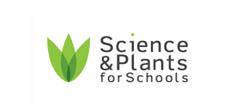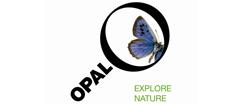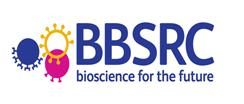Charlotte's Web - Lifecycles
Charlotte’s Web by E.B. White is the story of a little girl named Fern who loved a little pig named Wilbur and of Wilbur's dear friend Charlotte, a beautiful large grey spider. With the unlikely help of Templeton the rat, and a wonderfully clever plan of her own, Charlotte saves the life of Wilbur, who by this time has grown up to be quite a pig. This book is suitable for children aged 9-11 years old.
Charlotte's Web can be used as a setting through which you could:
· Compare the lifecycles of different creatures - goose, spider, pig and of plants.
· Research the gestation periods of other animals and compare them with humans
· Explore death and bereavement within a story context.
· Construct a timeline to indicate stages of growth in development of humans and other animals.
The children should investigate the different sexual reproductive process for different groups of animals. Comparing our similarities and differences with other animals. Through comparing the lifecycle of spiders and geese, the children will see that both birds and invertebrates lay eggs. However they are laid in different numbers and have different coverings to protect them. Spiders lay hundreds of eggs, protected by a silk egg sac. A goose lays 12-15 eggs in a clutch. Ask the children to consider why might think about why some animals, such as spiders, have large numbers of young.
Key scientific vocabulary: life cycle, reproduction, sexual reproduction, mammal, amphibian, insect, bird, fish, reptile, eggs, live young
Other fiction books with a similar theme:
Tracy Beaker – Jacqueline Wilson
Hetty Feather - Jacqueline Wilson
Mummy Laid an Egg – Babette Cole
Hair in Funny Places – Babette Cole
Turtle Life Cycle
This resource produced by ARKive supports the teaching of life-cycles at Key Stage Two. It looks at mammals, amphibians, reptiles and plants and finds similarities between the life cycles of animals and plants within each group, as well as some of the similarities and differences between these groups.
In Charlotte's Web there are two examples of egg laying species - Goose and Spider. This resource provides an example of a third - Turtles. It asks the children to consider the difference between egg laying animals and those that give birth to live young. Particularly the possible differences in how the young is parented after it has hatched or been born. In chapter five of Charlotte's Web we read that not all of the goose's eggs hatched. The children could consider why many animals often have large numbers of offspring in one go.
Save Our Bees
Chapter 21. Charlotte lays her eggs into the egg sac. 514 baby spiders will be born in the spring. Whilst spiders are invertebrates, they are not insects, so have a different lifecycle. They lay eggs in an egg sac and then the young emerge as miniature spiders or spiderlings all ready to scatter and begin their lives outside the barn. A common misconception is that spiders are insects. However insects have three body segments - head, thorax, abdomen whilst spiders only have two body segments - head and abdomen.
This resource shows the lifecycle of bees and provides a contrasting invertebrate lifecycle for children to explore. Insects have either metamorphic lifecycles - four stages - egg / larva / pupa / adult (bees, wasps, butterflies and beetles) or incomplete metamorphic lifecycles - three stages - egg / nymph / adult ( dragonflies / grasshoppers / earwigs / cockroaches)
Reproduction and Life Cycles - Part 1
Simple games by SAPS to help children learn basic plant anatomy and reinforce their scientific vocabulary in this area. These games including plant bingo and taboo and are ready to be printed off.
Reproduction and Life Cycles - Part 2
This SAPS resource explores in depth Pollination, Fertilisation and Seed Dispersal. There are lots of practical activities to help children explore these concepts more fully. For example the pollination game looks closely at Horsechestnut flowers which develop blotches once they have been fertilised. The children think about wild oats and seed dispersal. When they are sprayed with water the seeds begin to tumble over one another and move around the dish. You could ask the children why they think having seeds that can move might be important to a plant?
Education pack: Spring - pollination
These materials, produced by OPAL (Open Air Laboratories), aim to develop an understanding of the importance of pollination in the wider environment. Designed for use in the school grounds or when visiting a wildlife area, they link to the topics of plants and animals in the local environment, life cycles and interdependence and adaptation. They contain instructions on running the activities, a checklist of equipment required and a worksheet.
As the children walk around they are encouraged to look for both pollen and pollinators - wind or insect. They look for ways in which plants are adapted to attract pollinators. The role play game where the children are either flowers or pollinating insects, helps them to think about the essential role that insects play in plant reproduction.
One of the Crowd *suitable for home teaching*
This resource provides an example of how scientists use and apply their knowledge of insect lifecycles . The locust has an incomplete metamorphosis. Scientists use their understanding of their lifecycles in order to manage swarms of locusts and prevent damage to crops.
A single swarm may contain ten thousand million locusts and cover an area larger than greater London. Swarming adult locusts can fly 80km a day and they may travel several 1,000km before they settle to breed.The swarming locusts will devastate an area. A large swarm may eat 160,000 tonnes of food each day. This amount of corn would feed 800,000 people for a whole year.
Scientists use their understanding of the locust lifecycle to work out how they might control the population and when is the best time to take action. Use these resources to understand where locusts are found, how they live, what problems they cause and what action farmers and agricultural scientists take.
Snap science: teaching framework - year 5
In order to see plant lifecycles in action it is important to get outside and encourage children to observe the world around them. These activities from Snap Science explain what to get the children to look for and how to do it. There is no substitute for outdoor learning - seeing plants developing for real.
Children identify plants in their local area to visit several times over the year. They look for evidence of plant reproduction such as flowers, seeds heads, berries and fruits. They also record the numbers and types of pollinators they observe at different times of the year. In a second activity, children explore practically some of the methods for growing new plants without seeds, including planting bulbs and propagating plants by taking cuttings. They observe the growth of plants over time, collecting evidence and evaluating the effectiveness of growing plants without seeds.




